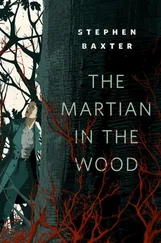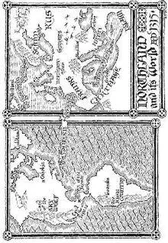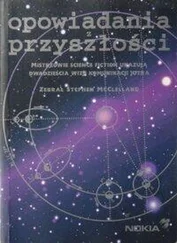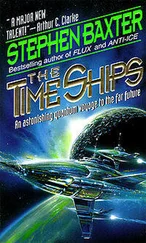Possibly. Jay Melosh, a specialist in impacts, has shown that a large enough impact can throw rocks off a planet without necessarily overheating them; a giant impact causes the surface rock layers to flex, and boulders are hurled away like dried peas off a trampoline. Melosh showed too that because Earth’s gravity well is a pretty large “target” for a drifting Mars rock, there has probably been quite a hefty transfer of material from the red planet to the blue over the aeons—though not so much the other way.
And, remarkably, it appears that some microbes could survive the multi-million-year journey from Mars to Earth, even without the benefit of cryosleep. On Earth, microbiologists have found fossilised microbes in salt strata two hundred and fifty million years old, some of which, when treated with tender loving care, revived.
All this makes panspermia a terrifically exciting idea once again. And since it seems likely that Mars was “warm and wet” and a suitable haven for life long before Earth ever was, though it has “aged” much faster, and since it’s easier to get from Mars to Earth than the other way around, perhaps Earth life actually originated on Mars. Perhaps we are all Martians!
But what of Pandora? Could the Pandorans be descended from Earth life? Or even, could we all be Pandorans ? The latter possibility actually seems the more likely of the two, given that Alpha Centauri is older than the sun by a quarter of a billion years or so (as astrophysicists can tell from the composition of the stars).
But the transfer of material across interstellar distances seems much less likely than between the planets. Mathematical simulations by Jay Melosh showed that over the life of the solar system probably only a handful of rocks from Earth have ever made it to Alpha, and vice versa, and even then the chance of any of them landing on a planet is slight. But it’s not impossible.
And there’s one other extreme possibility, which is referred to by the dry title of “directed panspermia.”
Never mind hitchhiking on rocks. In Avatar the starships of RDA have transported Earth life to another star—and have brought Pandoran life back to Earth too. If we have moved life between the stars, maybe other intelligent species have done it before. Maybe in some sense this is the purpose of intelligence, to be carriers of life between the worlds, whatever else we think we are doing.
I leave it to you to tell Colonel Miles Quaritch that he is actually an interstellar spermatozoon.
Philosophically, panspermia (directed or not) is something of a cop-out. It just puts off the deeper question of life’s ultimate origin. But what a marvellous idea it is: how emotionally satisfying. And if some day we do reach Alpha Centauri, and if we do find life on an Earth-like world, I don’t know if it will seem more wonderful to find our cousins, or a different sort of life entirely.
But even if we knew how life started on Pandora there would be more questions to answer. Whether or not Pandoran life is related to our own, we have been separated by light years, and presumably by billions of years of divergent evolution. How likely is it that Pandoran life will have any similarities to our own?
23
FOUR LEGS GOOD, SIX LEGS BETTER
Some elements of what we see of the living things on Pandora are familiar. There are complex multicelled life forms all over the place. Among the fauna many are vertebrates, with interior skeletons, just like us. Among the flora there are trees and flowers. There are herbivores and carnivores, and food-chain distributions of predators and prey.
Then there are differences. The land animals generally have six limbs where we have four. If they have fingers, unlike us “pentadactyls,” they have three plus a thumb—like the Simpsons of the TV show.
How likely is it that if we were to travel to Pandora, even assuming life got started there, living things would have anything even remotely in common with us? Or, you could ask alternatively, why should we expect the Pandoran biosphere to have any significant differences from our own? Why should the Na’vi look even slightly different from humans?
Exploring such questions is illuminating the history of life on Earth, as well as giving us the means to guess at what we might find on alien planets.
It used to be a given, I think, that other worlds would be inhabited, and probably dominated by humanoids more or less like us. That’s what John Carter found on Barsoom, in Burroughs’ Princess of Mars . Dejah Thoris tells Carter, “Nearly every planet and star having atmospheric conditions at all approaching those of Barsoom, shows forms of animal life almost identical with you and me.” This idea has become known as “convergent evolution,” the notion that similar conditions must mandate similar evolutionary outcomes.
Confidence in this idea was dented during the twentieth century as a result of a growing understanding of the complexity of life from the intricacies of DNA on upwards, and the discovery of the apparent chance events that have shaped life’s evolution, such as the wipe-the-slate-clean asteroid impact that rid the world of the dinosaurs.
By 1985, biologists like Stuart Kauffman were asking what would happen if the story of life were to be rerun from the days of the earliest Precambrian era, when the first life formed. If you could act out the drama again, how much of the result would be familiar, and how much not? Or to put it another way, what properties are “easy” for evolution to produce, and what difficult? What properties of life are “necessary,” and what are “contingent”—just one-off accidents? The debate has intensified since, with the late American biologist Stephen Jay Gould in one corner, who claimed that practically nothing would be repeated, to the British biologist Simon Conway Morris in the other, who has argued for inevitability both at the morphological level—the alien must look more or less human—and the metabolic—it must use something resembling our DNA wet chemistry.
Remarkably enough, the history of life on Earth has provided us with a series of natural experiments to test these ideas.
Thanks to continental drift many landmasses have spent tens or hundreds of millions of years more or less in isolation, including Australia, New Zealand, Madagascar and South America. There is isolation in time too: the long dinosaur evolutionary experiment was cut short by the asteroid, to be replaced by a mammalian equivalent later. It is as if the world has been filled with a series of its own Pandoras, isolated by sea rather than space, years rather than light years—and each has been a laboratory of evolution.
And what we observe in this natural laboratory is that life on Earth does seem to keep rediscovering familiar patterns.
The tree, so important on Pandora, is a classic example of convergent evolution. A “tree” is actually defined, for a biologist, by its form: a woody plant, with secondary branches supported clear of the ground on a single main stem, or “trunk.” And tree forms have emerged in many divergent classes of plants. Most trees today are fruit-bearing (angiosperms) or coniferous, but the earliest trees on Earth were tree ferns, horsetails and club mosses, which grew in the forests of the Carboniferous era some three hundred million years ago. These could be every bit as tall as modern trees. There are still tree ferns around, but the descendants of the horsetails and club mosses no longer have tree-like forms. The tree body-plan is obviously a universal response to similar environmental challenges: trees arise wherever a plant has to grow tall to compete for the light, while staying rooted in the ground for nutrients. So it’s no great surprise to see trees on Pandora.
Читать дальше










